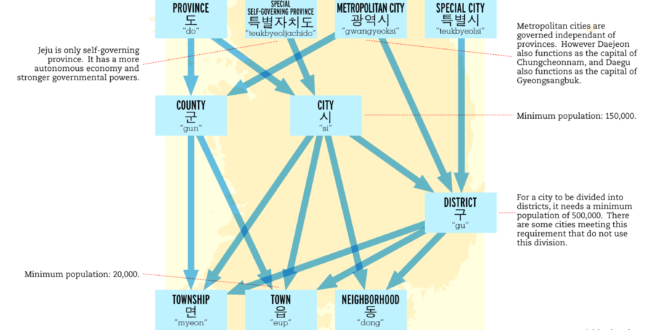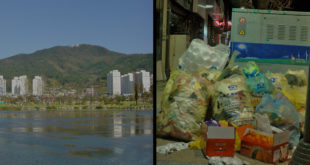South Korea is divided and subdivided in generally clear and easy to understand ways. The following is a brief introduction:

The country is divided into 9 provinces (도) (Jeju is one, though it is self-governing (특별 자치도)), 6 metropolitan cities (광역시), and 1 special city (특별시) (Seoul) which serves as the country’s capital. The metropolitan cities are governed independent of the provinces, and each province has its own provincial capital. Additionally, newly created Sejong city is considered a special self-governing city (특별자치시). However, in some cases,metropolitan cities can also self as a provincial capital. Daejeon is an example of this.
Each province is subdivided in cities (시) and counties (군). Population determines whether or not an area is divided in to a city, or the smaller populated county.
Each metropolitan city is subdivided districts (구) and possibly counties. Further, thesedistricts are divided into neighborhoods (동) and townships (면) and towns (읍).
Some larger cities are similarly divided into districts, then neighborhoods and townships. In order for a city to be divided into districts, it must have a population over 500,000. However, some cities that meet this requirement still are not divided in this way.
If not divided into districts, cities are simply divided into neighborhoods and townships.
Counties are only divided into townships and towns, requiring populations of 20,000 and 6,000 respectively.
Neighborhoods in some cities are further divided into other neighborhoods. In these situations the larger neighborhoods serve as legal administrators, while the smallerneighborhoods are more colloquial(?).
Both townships and towns are much less populated, and thus are divided into much smallervillages (리).
 Changwonderful
Changwonderful


















